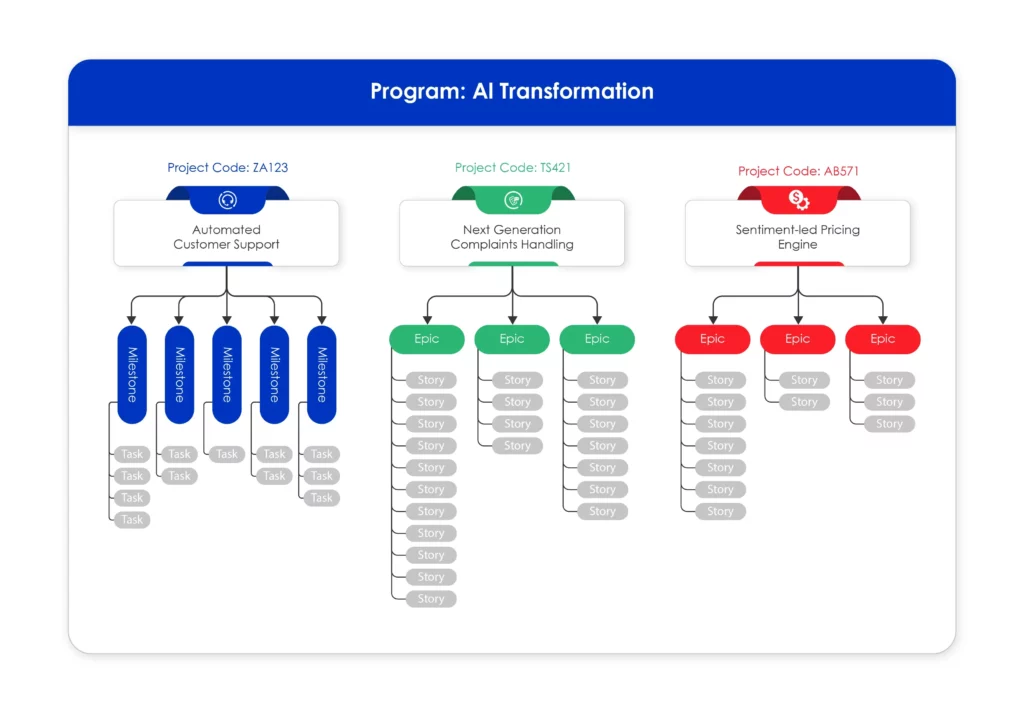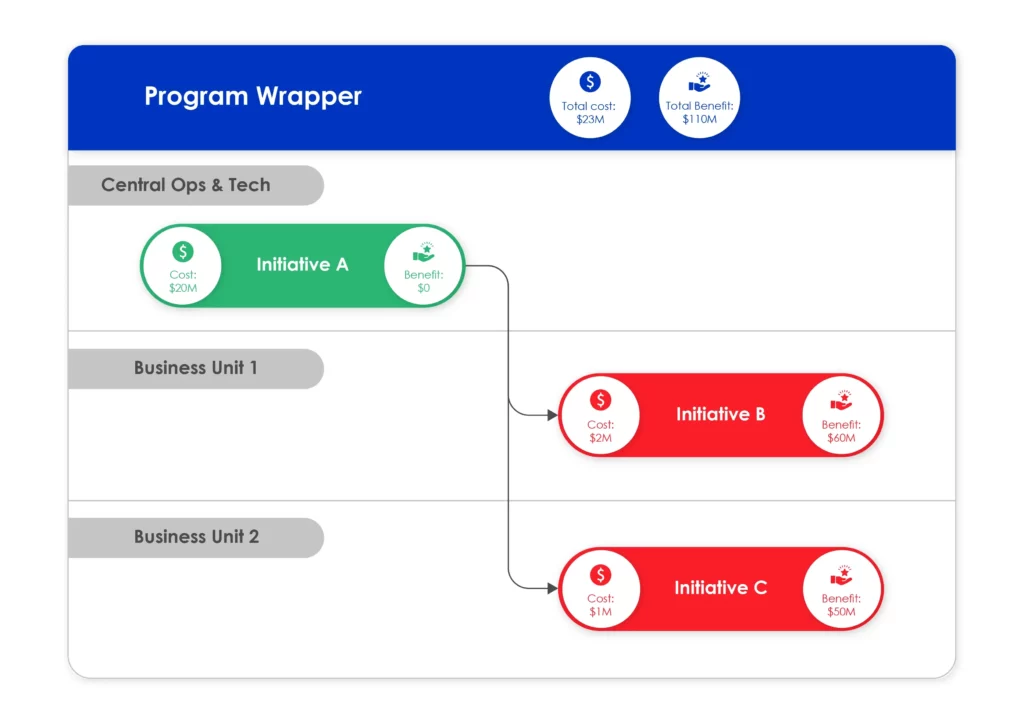In enterprise delivery, few terms are more misunderstood than "program." At first glance, it seems straightforward – a program is just a very big project, right? Or a group of related projects? But when it comes to actually tracking and managing initiatives across a complex portfolio, this intuitive understanding breaks down quickly.
The reality is that many organizations conflate programs with projects in their planning, budgeting, and overall governance. This leads to mismatched data and business cases that don't align, while PMOs and transformation teams waste valuable time fixing issues that shouldn't exist. The fallout includes duplicate financial codes, unclear ownership, reporting inconsistencies, and accumulated process debt – all of which slow delivery.
This article sets the record straight. A program isn’t a mega-project. It isn’t a delivery unit. It’s a reporting construct – and it only exists to make portfolio oversight easier. A well-implemented program cuts through complexity. Misuse it, and you're just adding layers of confusion.
💡 Note that in this article we use the U.S. spelling "program." In the UK, "programme" is standard, but the meaning is the same.
A program is a wrapper, not a work breakdown structure
The simplest way to think about a program is as a wrapper: a way to group and report on a set of related initiatives – which may include projects, epics, or hybrid delivery efforts. It provides a layer of oversight that helps leadership track progress, risks, and value at a more strategic level.
Critically, a program is not a delivery entity. The work is still done by the delivery units inside it. That means:
- A program should not have its own Oracle/SAP finance project code.
- Budgets, forecasts, actuals, and benefits should live with the underlying delivery items.
- The program aggregates these values, but doesn’t own them.
Once programs start to take on financial or delivery responsibility, you end up with blurred lines that create confusion across governance forums, business cases, and reporting structures

The cost of getting it wrong
If you track actuals at both the program and project level, what are you really measuring? If a program submits a business case while projects inside it also do the same, where does the truth live?
When programs are given financial codes, or worse, become their own planning entities, everything gets harder:
- Finance teams don’t know where to track spend.
- Governance boards don’t know what level to interrogate.
- Reporting teams build one-off rules to reconcile mismatches.
- Delivery teams waste time mapping the same work across multiple hierarchies.
This is the definition of organizational tax. It clogs up the system, erodes confidence, and turns your portfolio into a maze.
How to use “program” correctly
There are three legitimate, high-value reasons to use a program:
1. To track business cases that span multiple initiatives
Often, value is only realized when multiple initiatives work in concert. This is particularly true for enabling work – platforms, infrastructure, or foundational capabilities that, on their own, do not generate measurable returns.
Take an initiative like building a central data platform. It’s essential, expensive, and creates no standalone benefit. But when downstream teams begin to use that platform – to power marketing automation, real-time risk models, or embedded analytics – the benefits begin to flow.
Example: A major bank invests in a secure cloud-based data platform. The cost sits with the technology team, but the benefits are realized later through separate initiatives that deliver new digital products, customer insight dashboards, and real-time fraud detection. These downstream efforts are led by multiple business units, each with their own budgets, timelines, and KPIs.
In this model, the business case only makes sense at the program level. The program acts as a conceptual container that brings together the enabler and the initiatives it supports, so that the organization can see the full investment story and measure outcomes effectively.

2. To group related work for strategic oversight
Sometimes, multiple initiatives contribute to a broader theme or objective. Grouping them into a program allows leadership to ask, "How much are we investing in AI Transformation?" or "What progress are we making on Sustainability Initiatives?"
The key here is that each delivery item still carries its own budget, governance, and tracking. The program simply provides a lens to see them together.
Example: A global insurance firm tracks all AI-related initiatives across underwriting, customer service, and fraud detection under a single "AI Innovation" program to monitor total investment and alignment to strategic goals.
3. To connect different delivery models into a single oversight structure
A common need for programs arises when a portfolio includes both agile and waterfall work. For instance, an agile value stream delivering incrementally in Jira may need to coordinate with a waterfall project managed in Microsoft Project. These delivery approaches may be tracked in separate systems and funded through different codes, but the outcomes are interdependent.
The program provides a unifying structure that links disparate delivery models, making it possible to monitor dependencies, track cumulative value, and report consistently.
Example: A technology company modernizes its billing platform via a traditional project team while an agile team builds the customer self-service portal in parallel. A program helps executives monitor progress across both workstreams and ensure coordinated delivery.
When not to use a program
- Just because a project is big.
- To create a new delivery team or ownership structure.
- To submit a business case or hold its own financial code.
These shortcuts lead to long-term pain. If you need to break down a big project, use phases.
Use programs to create clarity, not confusion
Programs are valuable when used with discipline. They help leaders zoom out, track investment themes, align business cases, and manage hybrid portfolios. But they only work if the rules are clear:
- Delivery happens in projects, epics, and initiatives.
- Budgets and benefits live at the delivery level.
- Programs exist to report, connect, and clarify – not to deliver.
Treat programs as delivery vehicles, and they’ll slow you down. Treat them as clarity tools, and they’ll speed everything up.

